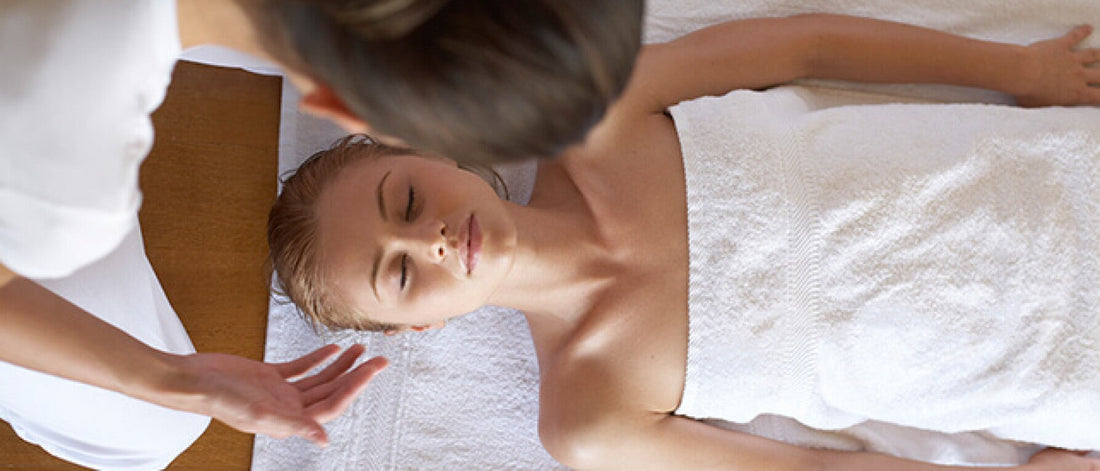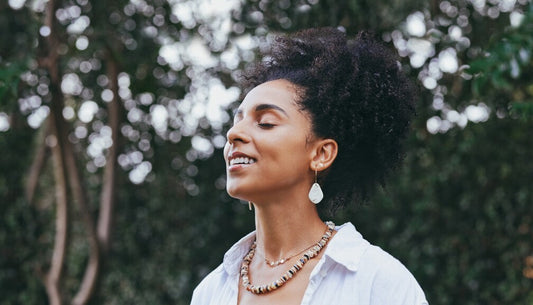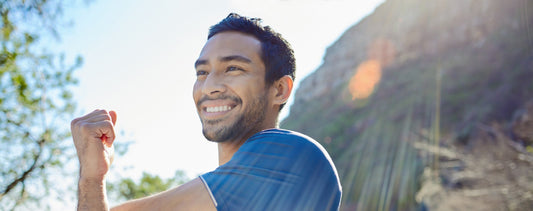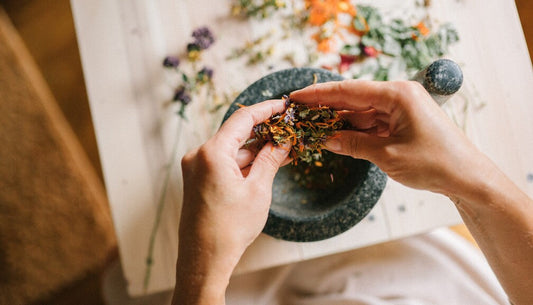In Ayurveda, Vata is the force that governs all movement in the body. When in balance, Vata can make you enthusiastic for life, clear thinking, intuitive, expressive, playful, and creative. In excess, though, it can manifest as pain, lack of appetite, tremors, coldness, constipation, anxiety, arthritis, racing thoughts, insomnia, and more.
Even if it’s not your primary dosha, everyone has some Vata in their constitution and a potential for Vata imbalance. In fact, because it rules motion in the body, Vata also rules the other two doshas, Pitta and Kapha. When Vata is out of whack, eventually the other two will be as well.
In the common-sense logic of Ayurveda, imbalances are treated with their opposites—cold is treated with heat, dry with wet, lightness with heaviness. Vata is considered cold, light, dry, subtle, flowing, changeable, irregular, rough, and clear. Therefore, excess Vata requires warmth, moisture, grounding, calm, and stability. From an approach that includes all five senses, this means warm colors and aromas, soothing music, hot and nutritionally-dense foods, grounding activities such as yoga and meditation, and soothing body treatments that help restore equilibrium.
After first addressing diet and nutrition, an Ayurvedic practitioner often recommends one or more of the following five spa treatments to further reduce excess Vata. Whether you are Vata by nature or just have symptoms of Vata imbalance, you will find that these luxurious therapies are easy medicines to take.
One or two therapists can perform the treatment at a spa or Ayurvedic clinic, or you can easily do Abhyanga self-massage at home. The massage can detoxify, tone, and soften the skin; reduce the physical symptoms of stress; promote relaxation; and calm the busy Vata mind.
Shirodhara has measurable effects on the central nervous system. According to a study reported in 2013 by the Journal of Ayurveda and Integrative Medicine, “A standardized shirodhara leads to a state of alert calmness similar to the relaxation response observed in meditation.” Researchers observed significant improvements in mood, slowed respiratory rates, reduction in blood pressure and heart rate, and an increase in alpha rhythms—the brain waves associated with a tranquil, conscious mental state. Warming, grounding, and deeply relaxing, it is perfect for balancing Vata.
Using light pressure, the therapist applies dosha-specific oil (usually infused with herbs and/or combined with essential oils) to the appropriate points in a circular motion for one to five minutes each—clockwise for strengthening and counter-clockwise for reducing excess. The gentleness of this therapy works well for sensitive Vata types. It can be incorporated into other Ayurvedic treatments, used alone, or easily self-administered.
If you want to try it at home, self-abyhanga followed by a hot bath, steam room, or sauna will have similar effects. It is an especially good treatment for muscle aches, pain, and stiffness.
The Chopra Center features a full-service Ayurvedic spa. Check out the full menu of therapies and treatments.
Even if it’s not your primary dosha, everyone has some Vata in their constitution and a potential for Vata imbalance. In fact, because it rules motion in the body, Vata also rules the other two doshas, Pitta and Kapha. When Vata is out of whack, eventually the other two will be as well.
In the common-sense logic of Ayurveda, imbalances are treated with their opposites—cold is treated with heat, dry with wet, lightness with heaviness. Vata is considered cold, light, dry, subtle, flowing, changeable, irregular, rough, and clear. Therefore, excess Vata requires warmth, moisture, grounding, calm, and stability. From an approach that includes all five senses, this means warm colors and aromas, soothing music, hot and nutritionally-dense foods, grounding activities such as yoga and meditation, and soothing body treatments that help restore equilibrium.
After first addressing diet and nutrition, an Ayurvedic practitioner often recommends one or more of the following five spa treatments to further reduce excess Vata. Whether you are Vata by nature or just have symptoms of Vata imbalance, you will find that these luxurious therapies are easy medicines to take.
1. Abhyanga Massage
Unlike many other therapeutic massage techniques that use minimal oil or lotion and focus on correcting muscular issues, Abhyanga is all about the oil—lots of it. Warm, herbalized, dosha-specific oil is rubbed on the body in rhythmic fashion from scalp to toes. The goal is to loosen toxins in the tissues and to rub in the nourishing, medicated oil as deeply as possible.One or two therapists can perform the treatment at a spa or Ayurvedic clinic, or you can easily do Abhyanga self-massage at home. The massage can detoxify, tone, and soften the skin; reduce the physical symptoms of stress; promote relaxation; and calm the busy Vata mind.
2. Shirodhara
Shirodhara is the process of pouring warm oil over the forehead in a continuous stream for anywhere from 20 to 60 minutes. Dispensed from a copper bowl or vessel that is suspended above your head, the oil creates gentle pressure and vibration on the third eye chakra, known as ajna in Ayurveda, the energy center that is connected to intuition.Shirodhara has measurable effects on the central nervous system. According to a study reported in 2013 by the Journal of Ayurveda and Integrative Medicine, “A standardized shirodhara leads to a state of alert calmness similar to the relaxation response observed in meditation.” Researchers observed significant improvements in mood, slowed respiratory rates, reduction in blood pressure and heart rate, and an increase in alpha rhythms—the brain waves associated with a tranquil, conscious mental state. Warming, grounding, and deeply relaxing, it is perfect for balancing Vata.
3. Marma Therapy
Marmas are pressure points on the body that act as gateways for Prana, the life force that is key to our physical and mental well-being. Stress, emotional trauma, and environmental toxins can all collect at these points, blocking the flow of Prana and negatively impacting your health. Gentle manipulation of marmas can alleviate pain, calm the nervous system, soothe mental agitation, strengthen digestion, and improve many other typical Vata symptoms.Using light pressure, the therapist applies dosha-specific oil (usually infused with herbs and/or combined with essential oils) to the appropriate points in a circular motion for one to five minutes each—clockwise for strengthening and counter-clockwise for reducing excess. The gentleness of this therapy works well for sensitive Vata types. It can be incorporated into other Ayurvedic treatments, used alone, or easily self-administered.
4. Swedana
Swedana is a fomentation therapy, meaning it involves the application of moist heat—something that cool, dry Vata types can always benefit from. The therapist usually first provides Abhyanga massage using herbalized oil, which loosens toxins in your body tissues, then places a specialized tent over the treatment table, covering all but your head. Herbalized steam fills the tent, helping your body to eliminate the toxins through sweat. Cold compresses can be placed on the head and heart to keep you from overheating, and the treatment usually lasts up to 20 minutes, depending on your tolerance.If you want to try it at home, self-abyhanga followed by a hot bath, steam room, or sauna will have similar effects. It is an especially good treatment for muscle aches, pain, and stiffness.
5. Oshadhi
Another variation of fomentation therapy is Oshadhi, the application of herbs and moist heat in the form of a body wrap. After a full-body massage or oiling, the therapist rubs a dry herbal mixture into the skin to further loosen and draw out impurities. The therapist then places hot, moist towels on your body and snugly wraps you from shoulders to toes, burrito style, in layers of sheets and insulating blankets. After 15 to 20 minutes, you shower off the herbs. The heat, moisture, oil, herbs, and stillness all work together beautifully to pacify Vata dosha.The Chopra Center features a full-service Ayurvedic spa. Check out the full menu of therapies and treatments.






















